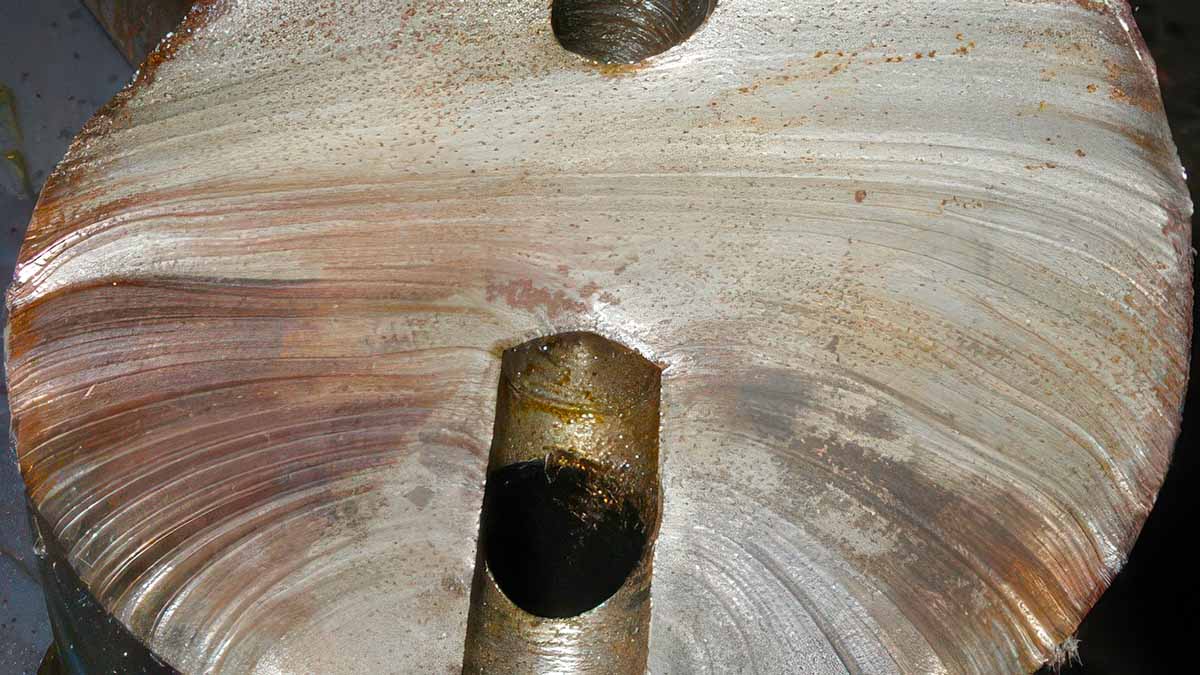Recently, I have explored the basics of Erosion, Corrosion, Fatigue, and Overload. We emphasize creating an awareness and appreciation for the value of failed components in any investigation.
In this article, I will delve into fatigue a bit more (because it is the most common fracture pattern) and see how we can use an evidence-based, deductive logic process to determine what elements of fatigue may have been at play. I am trying to create an intellectual curiosity within the front lines about ‘making the call’—is it fatigue or some other fracture pattern?
Let’s get started with, What is Fatigue?:
- Fatigue is failure (fracture) under repeated or fluctuating stresses that are well under the material’s tensile strength.
- The majority of pure mechanical failures are due to fatigue (80-90%)
We’ll frame this up as a mythical shaft failure being investigated via RCA (or whatever you want to call your investigative approach). In this case, we have a resulting pump failure (P-101), which has unexpectedly interrupted production. At the failure scene, we observe an obvious shaft failure (we see two separate pieces:-).
So, at this point, our Event (E) is ‘P-101 Recurring Failures’. P-101 has failed numerous times over the past year for different reasons, but we are most interested in this particular driveshaft failure.
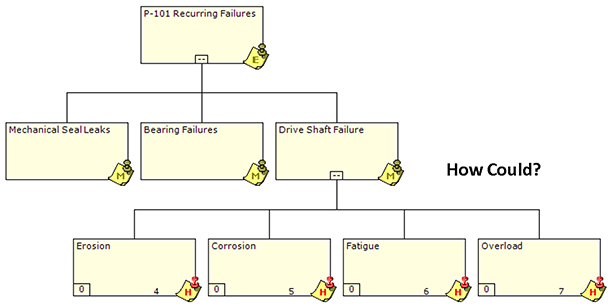
All we know is that the drive shaft shouldn’t be in two pieces. We are the first ones at the scene and have the usual production pressure to get back up and running ASAP. However, we are also interested in preventing this from happening again.
So, we know the clues to such prevention are in the evidence at the scene (just like any other investigative occupation). We preserve the failed parts and prevent them from being thrown into the dumpsters.
Fatigue failures often leave clear clues—you just have to know how to spot them.
We bring the broken parts into the shop and stage them on a pallet. We notify the internal investigators (usually the engineers) that we have the failed parts, and they can pick them up when convenient.
In the meantime, I’m a curious mechanic who attended a recent workshop on identifying fracture patterns. I am also curious if my analysis of the fractured surface will match that of the professional investigator.
So, I look at the failed surfaces of the two pieces of the same shaft. I know from my training there are four (4) basic failure modes for fractured components:
- Erosion
- Corrosion
- Overload
- Fatigue
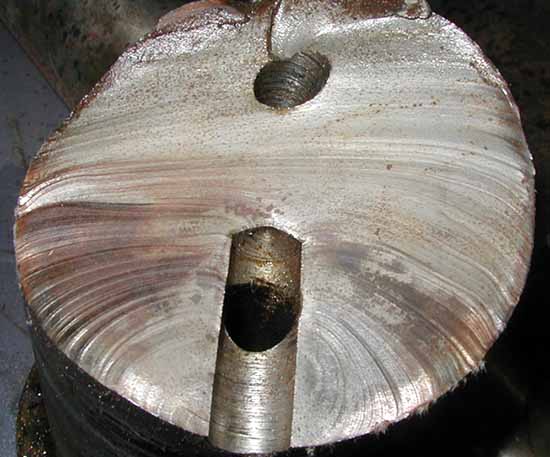
There are no smooth rubbing patterns that would indicate Erosion (uniform loss of metal). There is no pitting to provide evidence of Corrosion. There is not a rough, consistent pattern across the entire surface, indicating an instantaneous Overload.
However, there are these ‘beach marks’ that they talked about in class, indicating a cyclic pattern consistent with fatigue. On this basis, I can rule out all but fatigue. (Picture used with permission by Neville Sachs).
Beach marks are nature’s fingerprints left behind on a fatigued surface.
So now, using the logic tree I am constructing on a paper towel in the shop, I ask, ‘How could I have a fatigue fracture of the shaft?’ I recall from my class there were two basic types:
- Mechanical
- Thermal
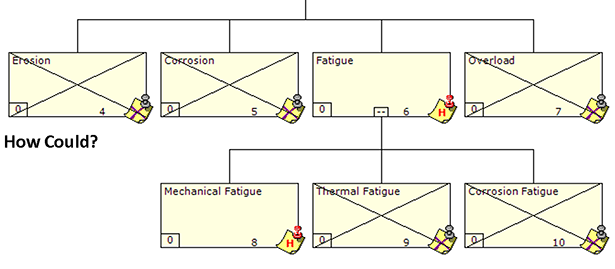
Note: the numbers in the lower left corner of my hypotheses indicate Confidence Factors. With my evidence, how confident am I that the hypothesis is absolutely true (5) or absolutely not true (0 – marked with an ‘X’)?
In my limited experience analyzing failed surfaces, it looks primarily to be Mechanical Fatigue. I thought there might be a bit of temperature contribution due to the discoloration, but it turned out to be dirt. So, I crossed off what is not true and pursued what is true.
So, my questioning is consistent as I drill down through the physics of the failure. “How could I have a Mechanical Fatigue failure of the shaft, resulting in an unexpected shutdown?” I had a memorable instructor in that fractology class, he used hundreds of parts to show us real failures (each with a story that stuck in my mind). At this point, I recall him talking about the five (5) most damaging forces. They were:
- Tension
- Compression
- Torsion
- Bending
- Shear
My instructor also used a lot of graphics to make the concepts come to life for me. Pictures work better for me than lots of words!
Tension

Compression

Torsion

Bending

Shear

I will use bending forces on this one, judging from the beach mark progression pattern. I thought some torsional forces were going on, but no classic 45-degree fracture plane existed.
I also recall talking in my class about fracture origins, the cyclic progression of the beach marks (also called clamshell marks), and the Final Fracture Zone (FFZ) or instantaneous zone. The FFZ is when the crack propagated far enough that the shaft can no longer take the load. So, the FFZ is the rougher area showing an Overload pattern.
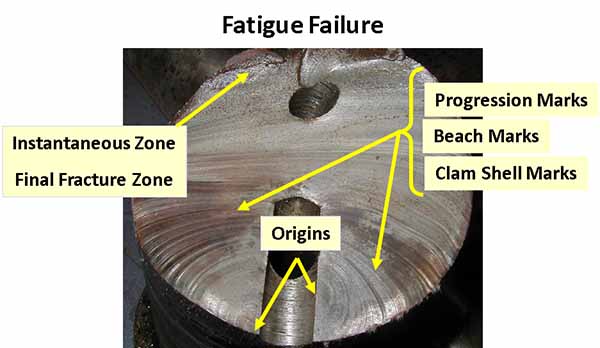
Depending on how large or small the FFZ is, will determine if the load was light or heavy.
I also learned the distance between the progression lines indicated the magnitude of the cyclic stresses.
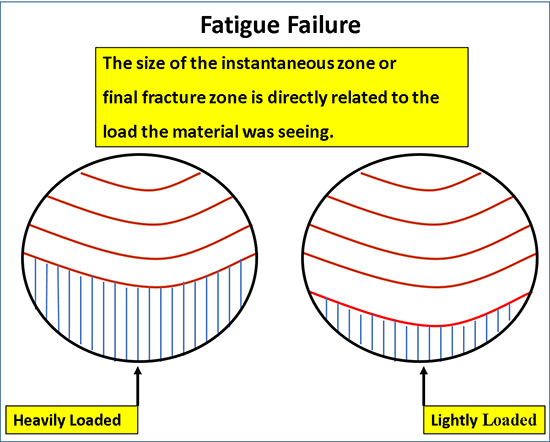

So, in my case, the fracture pattern I see (as a novice) is a bending force going in the counterclockwise direction.
Fatigue Striations
I remember something about these things called ‘fatigue striations.’ Those are fancy words, so I had to look it up in my course manual. Here is what it says:
“Fatigue striations are microscopic features on a fatigue fracture surface that identify one propagation cycle of a fatigue crack. They are not always present and can only be seen under a scanning electron microscope.
Beach marks (also sometimes clamshell marks) are macroscopic fatigue features marking an interruption of some sort in the fatigue cracking process. Both features are used to identify fatigue fractures. Fatigue striations can also be used to estimate the number of cycles, etc.”
Here is a picture they showed us in class to illustrate their point. I can see the patterns they are talking about.
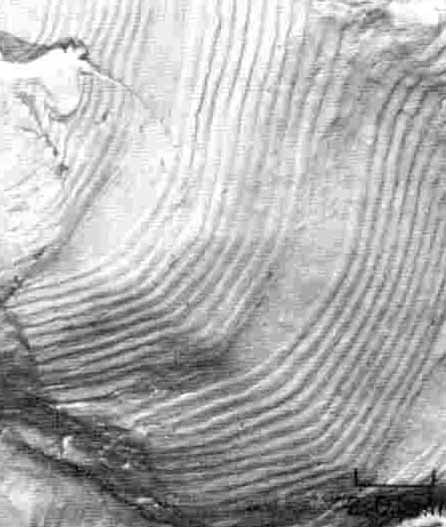
Ratchet Marks
Then they talked about these things called ‘Ratchet Marks.’ I’ve seen these things on other failures many times before but never knew what they were. Ratchet marks are surface features perpendicular to the fatigue crack’s origin.
They are formed by fatigue cracks overlapping one another. Ratchet marks “point” back to the failure origin and can be used to count the number of origination points. This is not evidenced on my failure, but here is a pic they showed me to to embed it in my mind.
Ratchet marks point the way home—to the exact origin of the failure.

So, as I keep drawing on my paper towel to show my logic thus far (because I want to impress the engineer who will come and pick up the parts), I keep asking the ‘How could?’ questions.
“How could I have a torsional, mechanical fatigue resulting in a shaft fracture?” One possibility (hypothesis) is misalignment. I know this because I see it all the time. While I see it often, I’m unsure how it works from a technical standpoint. Again, flashbacks from class.
Alignment
I learned about three (3) types of misalignment:
- Angular Misalignment
- Motor set at an angle to driven equipment
- If center lines were extended, they would cross each other, not run along a common center-line
- Parallel Misalignment
- Shaft center lines are parallel but not in line
- Offset vertically or horizontally (or both)
- Combination Misalignment
- The motor shaft suffers from both angular and parallel misalignment
Of course, the picture is more effective than all those words.

Well, it is getting close to the end of my shift, so I will have to pick this back up tomorrow. I didn’t learn much about the causes of misalignment, so I will have to research this (or call my instructor, which is easier). I know we are getting closer to people and the system’s issues.
Also, I can add more hypotheses by asking the ‘How Can’ question when exploring the physics of the failure (not just ‘Why). While ‘misalignment’ is one possibility causing bending fatigue, I know there could be more, but I may not be aware of them. This is when I ask my friends and the investigators so I can learn as I go.
Asking ‘How can this happen?’ opens doors that ‘Why did this happen?’ often misses.
With my new ‘questioning attitude,’ I will eventually come across why they bore a hole in the keyway. I’m sure that had some type of stress impact that contributed to this failure.
If I keep drilling down in this logical, evidence-based manner, I will come across some poor decisions that were made. This doesn’t mean they were bad or incompetent; often, it just means they didn’t have accurate or enough information to make an informed decision.
Also, when pressured for more production, we have to take shortcuts. When I take a shortcut, and nothing bad happens, I will think that step is not necessary, so I won’t do it anymore. Doing this creates a new ‘practice’ (a deviation from an acceptable standard). For this scenario, they used a fancy research term called ‘normalization of deviance.’
Since my boss watched me take the shortcut to meet the production requirement and didn’t say anything, it must be OK (in my mind). Of course, until I take the same shortcut and it causes a failure, I will no longer be a ‘hero’…I will be a ‘zero and subject to discipline. It’s pretty hypocritical if you ask me, but that is life on the front lines!
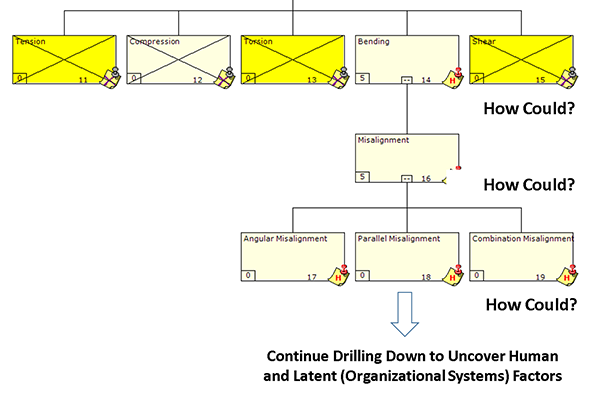
My instructor told me it is more important to understand ‘Why’ someone felt they were making the right decision at the time than who made the poor decision.
It makes sense that if we understood the reasoning for the bad decision, we could correct the organizational systems and influences on the decision-makers. No one comes to work at my place planning on making a poor decision that could cause harm to people or the process we just have to figure out what they were thinking.

